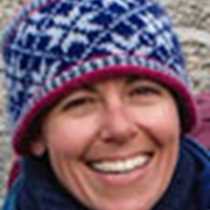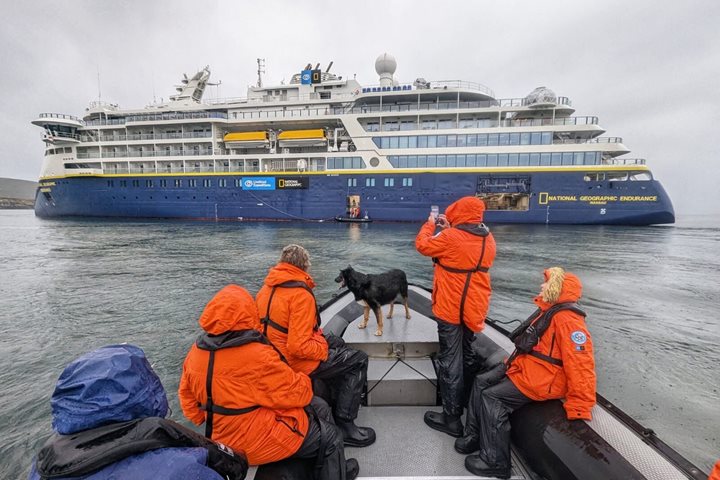On another beautifully sunny day in the Falkland Islands, we enjoyed the hospitality of two different sheep farming homesteads located in the northwest. Our first stop at Carcass Island afforded some of us the opportunity to hike 2.5 miles from Leopard Beach over to the settlement, while others took shorter walks starting from the settlement. The scent of coconut from the yellow blooms of the European gorse filled our noses and the honks of upland geese and the sweet songs of long-tailed meadowlarks filled our ears.
As we strolled along the rolling hillside, we kept an eye out for the hidden burrows of Magellanic penguins (and even found a few specimens out in the open) and spotted a pair of Magellanic oystercatchers. It was a great day for birdwatching and unhurried storytelling in the warm breeze.
We ended our morning walks in the cozy home of Rod and Lorraine McGill, who have lived on the island since 1974. Together with their team, they served up a tempting collection of cakes, cookies, and sweets, accompanied by coffee and tea.
We repositioned to West Point Island for our afternoon activities. Those who were up for it walked the 1.25 miles over to an astounding colony of close to 23,000 pairs of black-browed albatrosses (according to a recent Falklands Conservation census), while others bounced along the hillside in one of the local Land Rover vehicles. The albatross colony is more than just that—there are also thousands of nesting rockhopper penguins squeezed into the tiny spaces between perennial albatross nests.
These two species seem to manage co-existence, albeit a noisy one filled with agitated brays, on this wind-swept rocky cliff. We all took advantage of the fine weather and the time to sit and observe the pair-bonding rituals of the albatrosses, attempting to capture the perfect photo of these gorgeous creatures soaring overhead.









